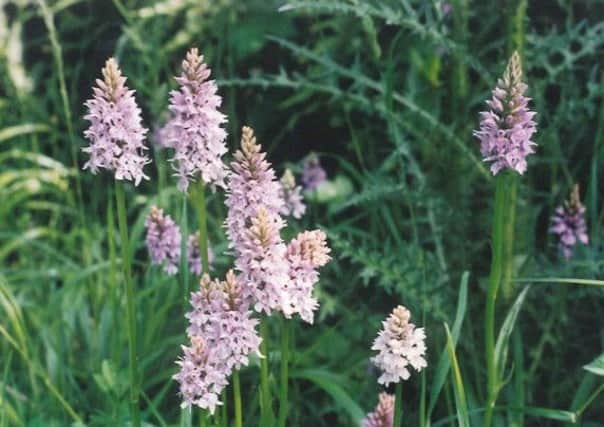RICHARD WILLIAMSON: Nature’s ebbs and flows are a timely mystery


Among them are the orchids, all 12 species, and here, the spotted orchid.
If you’re a KV walker you will know the narrow bank of downland on the western side as you come down the hill from the four Devil’s Jumps. This year it was crammed with these spotted orchids, 1,767 in fact. In 1964 there were only 25.
Advertisement
Hide AdAdvertisement
Hide AdThe numbers gradually increased over the years, fluctuating up and down until three years ago there were over 1,000.
But orchids are queer little plants you know.
Everything has to be just so. Have you ever treated yourself to a tropical orchid in a plant pot from a nursery?
Ten to one it will die unless you give it specialist care. We have no idea why orchids come and go so dramatically. The bee orchid at KV has all but died out now as thicker grasses swamp the tracksides where it grows. This orchid is a so-called pioneer, which thrives on new soil.
When the army drove tanks all over KV during the war, and used the valley as a bombing range, the chalk turned up was a perfect seed bed.
Why didn’t the same apply to the spotted orchid?
Advertisement
Hide AdAdvertisement
Hide AdI have often wondered. Both species also need a special mycorrhizal fungus in the soil to feed on, which is only found here and there.
Another orchid causes even more surprise. The smallest is the frog. Today hardly one is seen at all.
Thirty years ago there were three thousand on the nature reserve.
It just goes to show that one or two years’ samples to show the state of the nation’s nature is not good enough.
Advertisement
Hide AdAdvertisement
Hide AdYou need very long-term records that take in natural swings.
Cowslip numbers have increased slightly over 50 years.But the two square yards of horseshoe vetch growing on KV has not altered one bit in half a century.
This flower is vital to the rarest butterfly on the reserve, the chalkhill blue, as it is the only food the caterpillars will eat.
In general the vast majority of downland plants have not altered much in half a century.
Advertisement
Hide AdAdvertisement
Hide AdI make detailed surveys of selected square metres of downland, and the structure of 30-plus species stays more or less the same in the older meadows.
Research in Russia on plant communities has shown that some individual flowers have not altered in 200 years, their position in the ground exactly the same year after year.
This I can well believe having seen flowers such as bladder campion, houndstongue, and gromwell always appearing in the same place over decades.
Meanwhile my butterfly research soon comes to the end of another year of records going back to 1975 while the common bird breeding census was started in 1962 and continued this year.
It all needs to be published as the records are not online and the only copies are in files tucked away somewhere in my study.